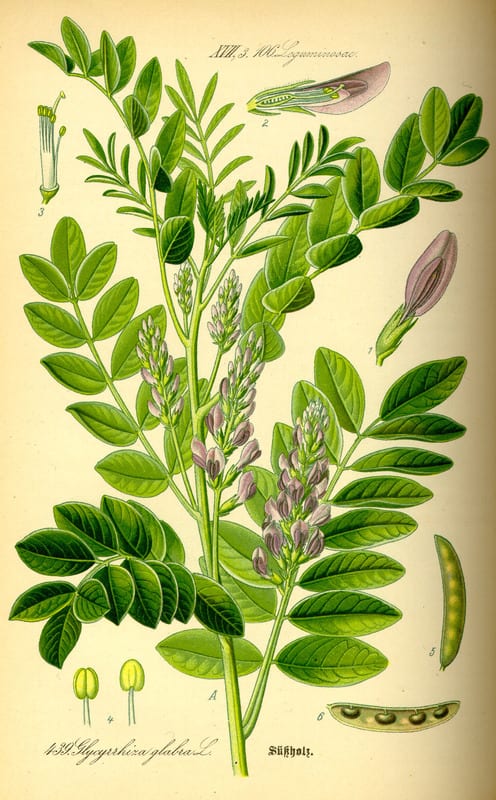
🌿 Morphology
🌞 Growing conditions
🌍 Origin and family
🌾 Uses
Warning: Despite the care taken in writing this sheet, it is essential to cross-reference sources before using or consuming any plant. When in doubt, consult a qualified professional
Permaculture uses
Licorice root is primarily used medicinally and as a flavoring agent. The root can be chewed directly or used to make tea, tinctures, or extracts. It's also used in confectionery and beverages. In the garden, it acts as a nitrogen fixer, enriching the soil. It can also be used as a ground cover due to its spreading rhizomes. Some cultivars are bred for higher glycyrrhizin content, the sweetening compound.
Permapeople description
Glycyrrhiza glabra is a herbaceous perennial plant known for its sweet roots.
Botanical description
Glycyrrhiza glabra is a herbaceous perennial belonging to the Fabaceae (pea) family. It grows to a height of 1 meter (3 feet) with pinnate leaves consisting of 9-17 leaflets. The flowers are papilionaceous, purple to pale whitish blue, and produced in loose inflorescences. The fruit is an oblong pod containing several seeds. The plant possesses a deep taproot and spreads via rhizomes. The root is brown externally and yellow internally, possessing a characteristic sweet taste due to the presence of glycyrrhizin. It prefers full sun and well-drained soil.
Companion planting
Licorice is a nitrogen-fixing plant, so it can benefit plants that require nitrogen. It is generally considered a good companion for other plants, though its spreading habit may require management to prevent it from becoming invasive. No specific unfavorable associations are widely documented.
Propagation methods
Propagation is typically done via seed, root cuttings, or division of the rhizomes. Seeds require scarification and stratification for optimal germination. Root cuttings are taken in late winter or early spring. Rhizomes can be divided in the fall or early spring.
History and traditions
Licorice has a long history of medicinal use dating back to ancient Egypt, Greece, and China. It was used traditionally to treat coughs, sore throats, digestive issues, and adrenal fatigue. In traditional Chinese medicine, it's considered a harmonizing herb and is included in many herbal formulas. It was also used as a flavoring agent in foods and beverages throughout history. In some cultures, it was believed to possess magical properties.
Usage calendar
Flowering occurs in summer (June-August). Harvesting of the roots typically takes place in the fall (October-November) after 3-4 years of growth. Planting is best done in spring. Pruning is not typically necessary, but dead or damaged stems can be removed as needed.
